The Maria Flor Inn is a boutique hotel with 12 rooms, located on the island of Fernando de Noronha, a Natural World Heritage (UNESCO, 2001). The project is the result of the collaboration between Priscilla Muller Studio and Solo Arquitetos, and it was conceived as a sponge of its context, seeking to absorb and integrate architecture and nature in a subtle, respectful and responsible way. The main proposal was to keep the guests aware of their stay on one of the most beautiful islands on the planet at every moment.
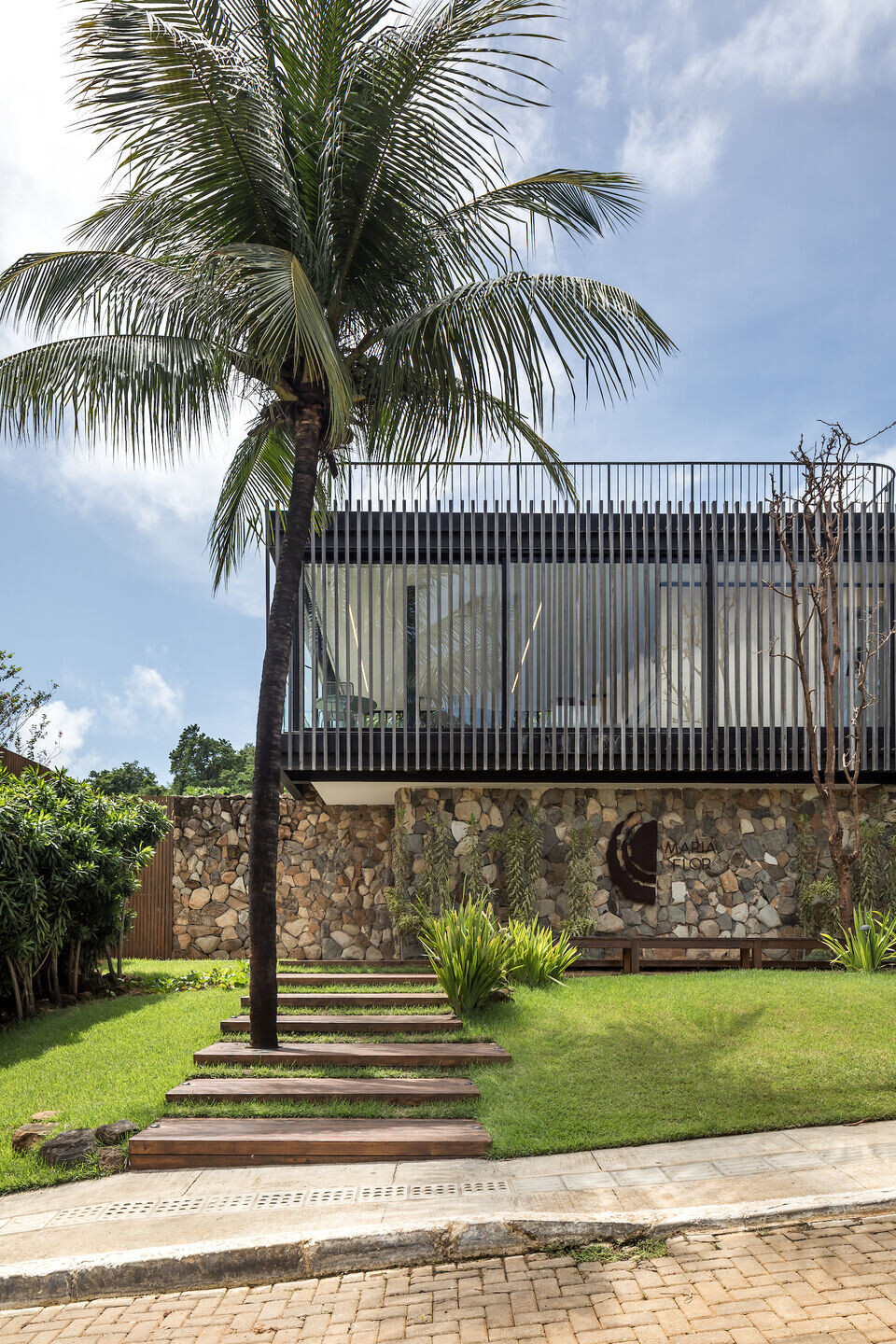
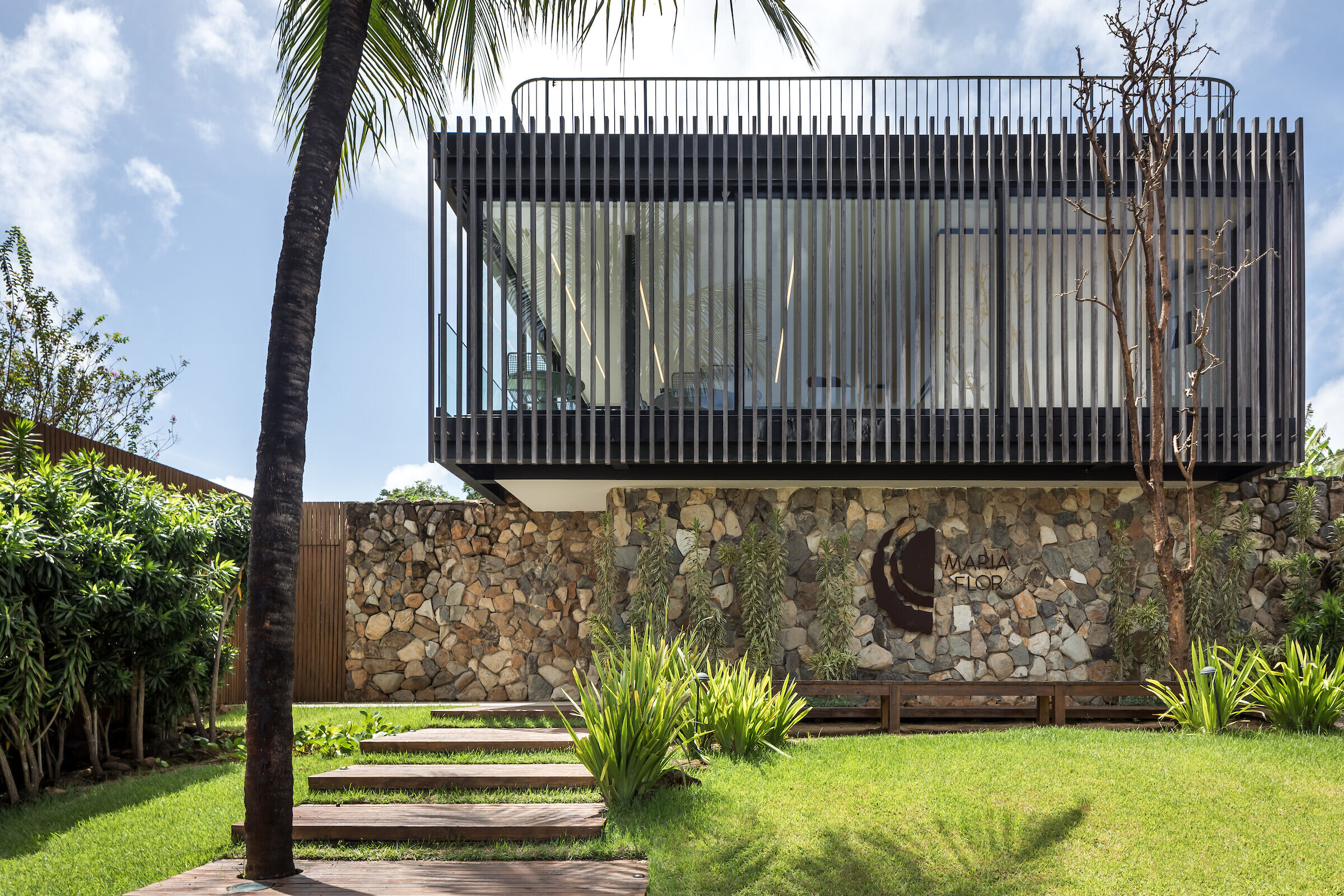
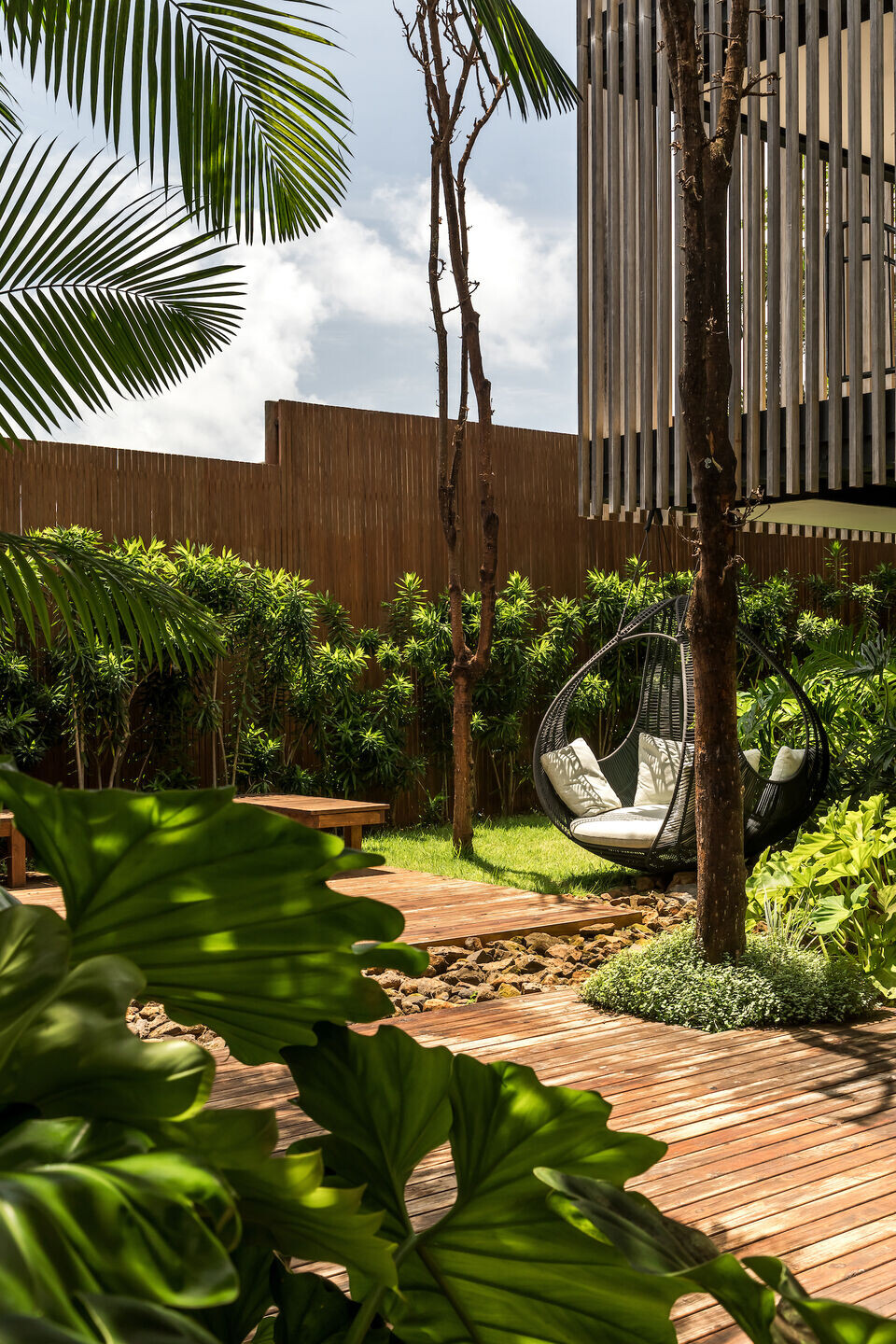
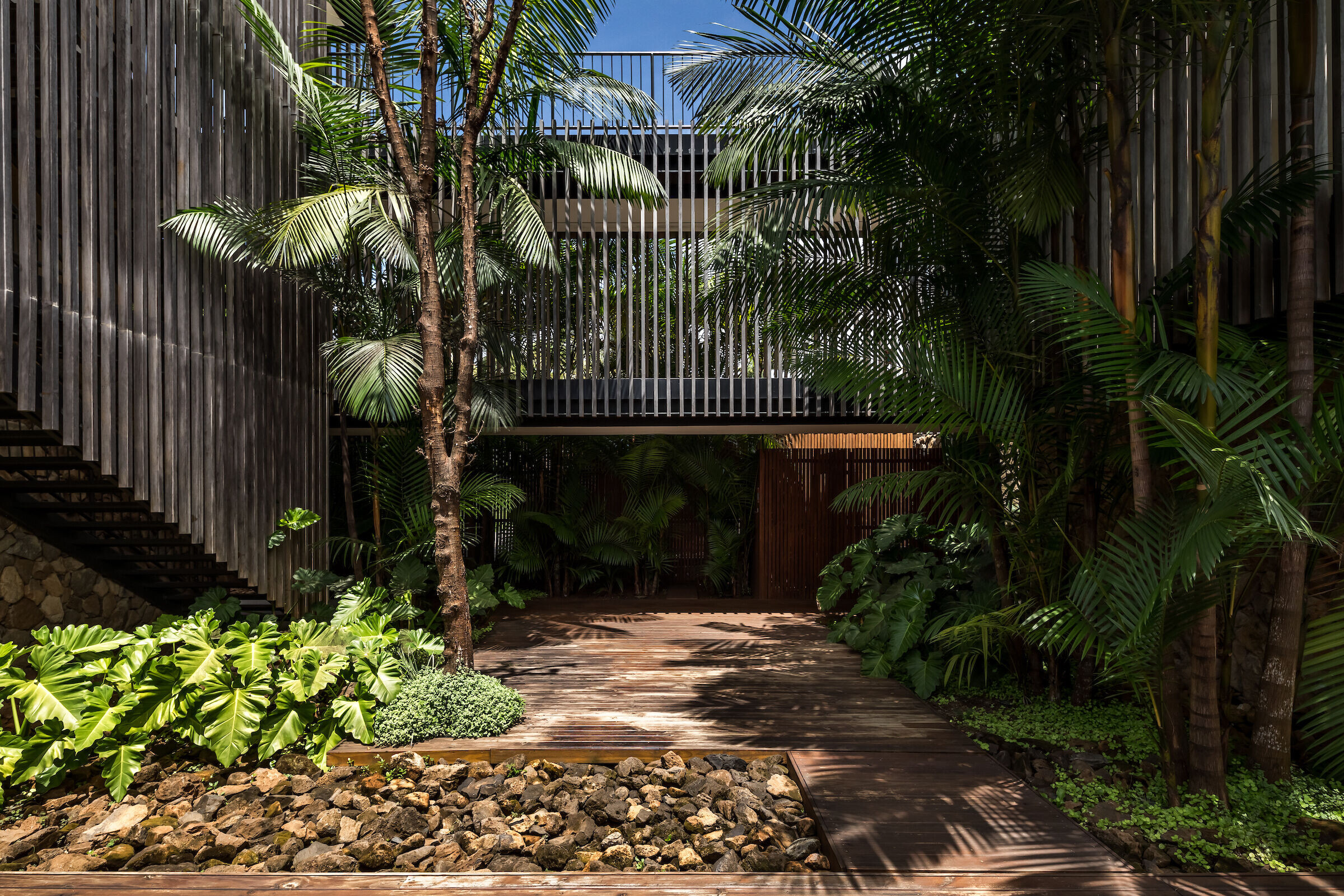

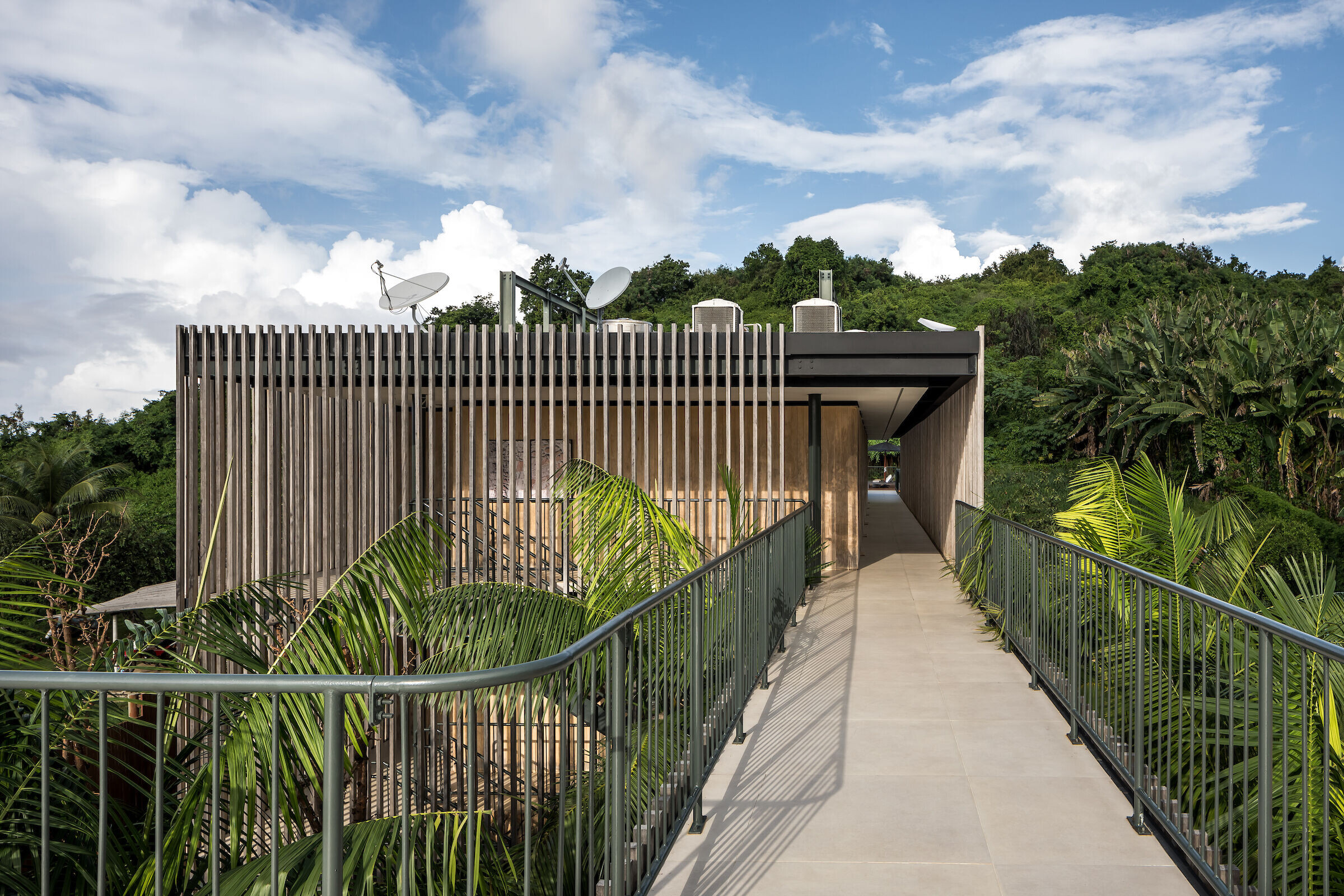
Building in such a special location is both rewarding and challenging. Naturally, as it is an island, the basic premise of the design was the constructive intelligence, based on a modular construction - made almost entirely of steel structure - always seeking the lowest environmental impact possible. Therefore, the building takes advantage of the original morphology of the site, being based on three main levels and three different blocks that are connected by a walkway that runs throughout the building. This design allowed us to organize the spaces, by creating different degrees of privacy, as well as different visual opportunities.
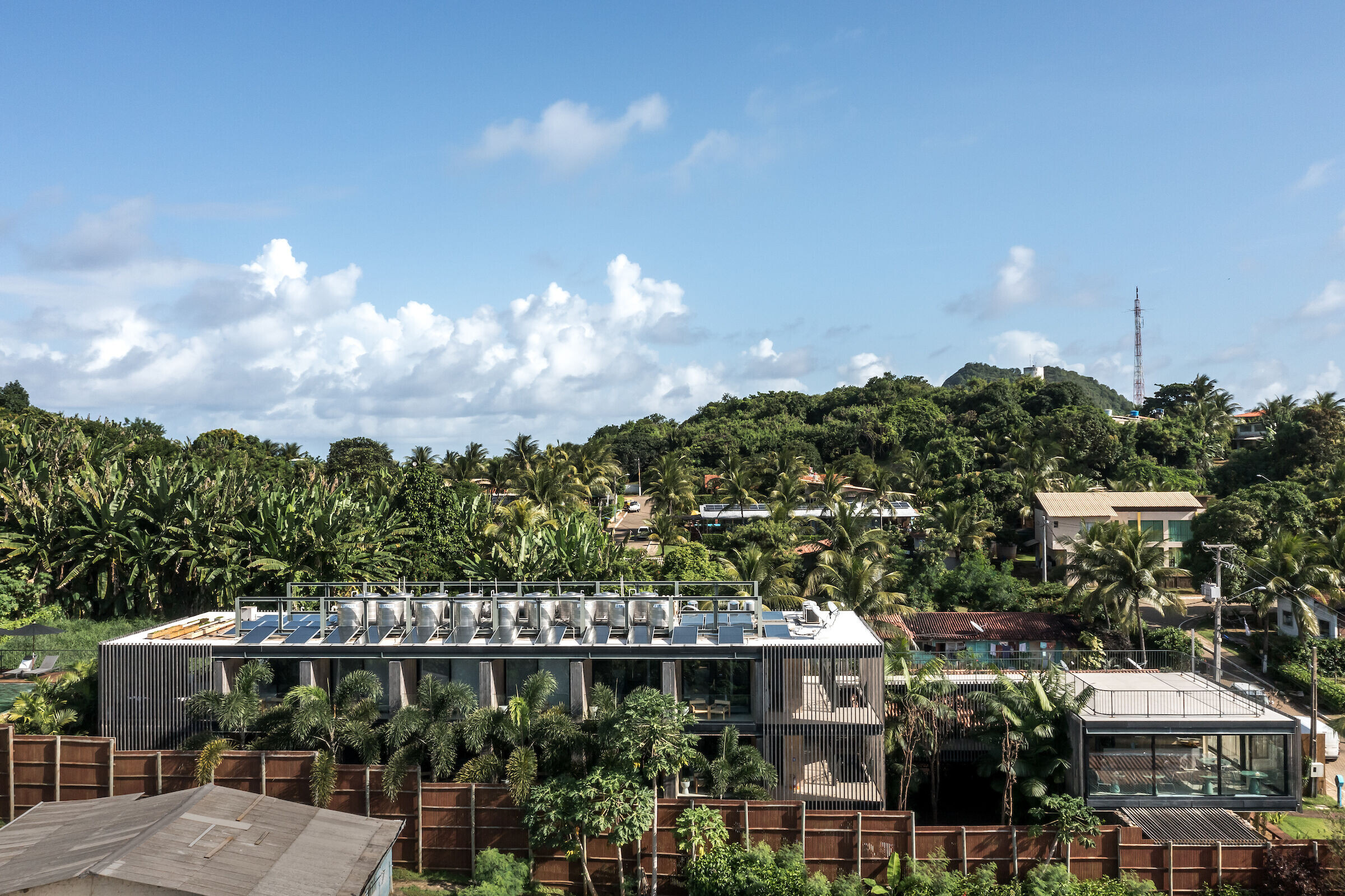





The first block, closer to the street, houses the collective areas of the hotel, reception and management on the ground floor, the restaurant on the intermediate floor, and a multipurpose space on the roof slab at the upper level, with a special view of Morro do Pico, one of the main attractions of the island. The second volume houses the apartment block, with only a technical space on the ground floor that supports the staff. The rooms located on the upper level have an incredible view of Forte dos Remédios. Between the first and second block, there is a generous patio that serves both as reception and a meeting space for customers, which was masterfully crafted by the landscape designer Alexandre Furcolin. Finally, in the last block, we have the hotel's swimming pool - completely covered in Botanic Green quartzite, an exuberant Brazilian stone - in a completely private environment and practically immersed in the native forest of the island. The three blocks composition creates a natural sense of flow, where spaces lead the guest throughout the site, as if they were flowing inside the building, like water flows inside a sea sponge.






As for materiality, the hotel is consolidated with basically three main materials: the raw natural stone coating the ground floor blocks, the apparent steel structure painted in a dark green tone, and the closing panels and slats in Accoya - a modified wood that offers a combination of durability, stability and versatility, an amazing fit considering the island climate conditions. These slatted planes constitute the main aesthetic element of the hotel, dissolving the boundaries between interior and exterior, allowing the guest to always be connected to nature in some way, whether with a view of the landscape, whether with the island breeze, or maybe even with the dancing shadows of the slatted panels throughout the day.


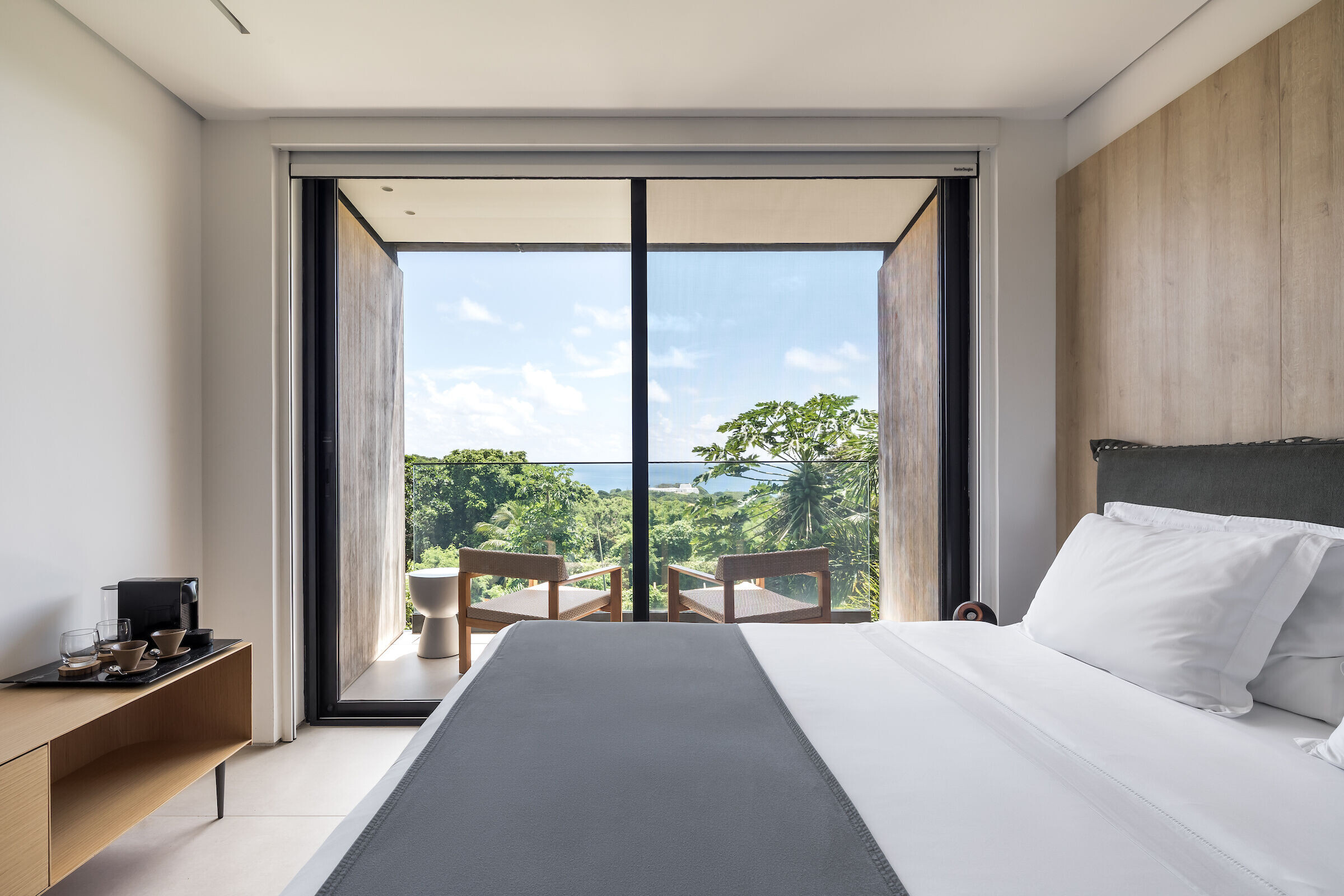
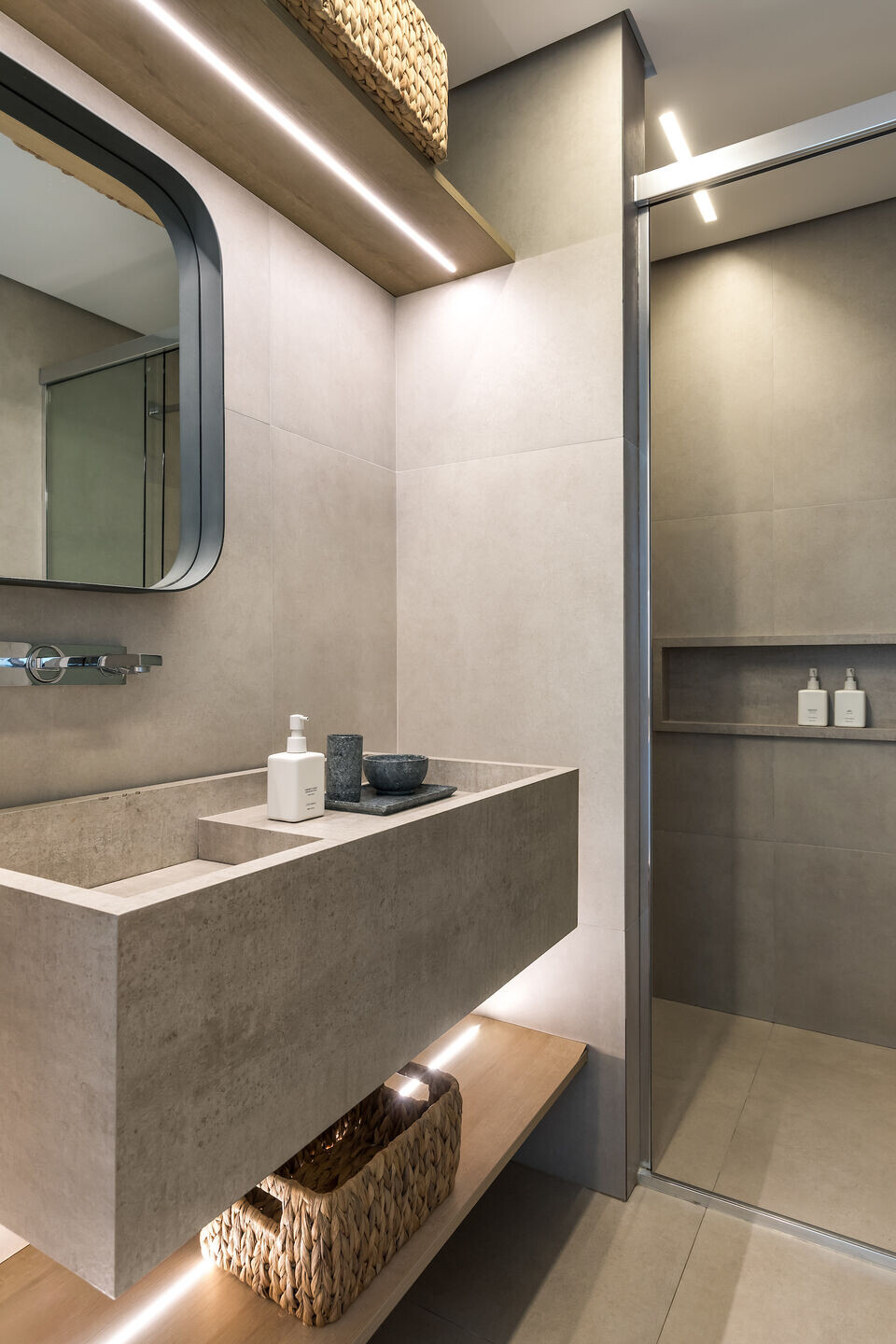

The contemporary language of the building is also reflected in the interiors, with a limited palette of materials, simple and well-defined plans, always emphasizing the simplicity and elegance of the hotel amenities. The main idea is that the building architecture offers a welcoming space, sheltered and comfortable, without assuming a leading role over the natural exuberance of the island. After all, the hotel is essentially a resting place, a retreat for its guests in Fernando de Noronha.

























































